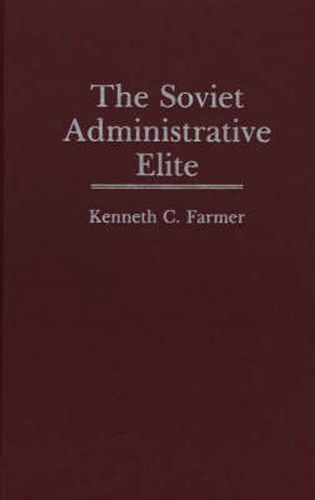Readings Newsletter
Become a Readings Member to make your shopping experience even easier.
Sign in or sign up for free!
You’re not far away from qualifying for FREE standard shipping within Australia
You’ve qualified for FREE standard shipping within Australia
The cart is loading…






The Soviet elite has undergone two major transformations in the 20th century - Stalin’s purges and replacement of old elite by Soviet trained proletarian modernizing managers; and, under Gorbachev, the current displacement of the modernizing managers by politicians . This book is an analytical study of the Soviet political elite as a body, from 1917 to 1990. Focusing on the changing structure of the elite, it is based partly on Kenneth C. Farmer’s database consisting of biographical and career data on over 1500 high-level leaders. Farmer also synthesizes the work of four classical theorists - Gaetano Mosca, Vilfredo pareto, Max Weber, and Alexis de Tocqueville - with more contemporary theorists. The book’s unique features include its scope, the central database (the largest on which any work has been published), and its creative theoretical approach. Farmer concludes that the dismantling of the personnel selection system with competitive elections deprives the elite of the ability to reproduce itself. New voluntary associations make possible the emergence of genuine strategic elites . In examining the ramifications of this new system, this book is one of the first studies to apply a structural-anthropological theoretical framework to the phenomenon of Soviet elites.
$9.00 standard shipping within Australia
FREE standard shipping within Australia for orders over $100.00
Express & International shipping calculated at checkout
The Soviet elite has undergone two major transformations in the 20th century - Stalin’s purges and replacement of old elite by Soviet trained proletarian modernizing managers; and, under Gorbachev, the current displacement of the modernizing managers by politicians . This book is an analytical study of the Soviet political elite as a body, from 1917 to 1990. Focusing on the changing structure of the elite, it is based partly on Kenneth C. Farmer’s database consisting of biographical and career data on over 1500 high-level leaders. Farmer also synthesizes the work of four classical theorists - Gaetano Mosca, Vilfredo pareto, Max Weber, and Alexis de Tocqueville - with more contemporary theorists. The book’s unique features include its scope, the central database (the largest on which any work has been published), and its creative theoretical approach. Farmer concludes that the dismantling of the personnel selection system with competitive elections deprives the elite of the ability to reproduce itself. New voluntary associations make possible the emergence of genuine strategic elites . In examining the ramifications of this new system, this book is one of the first studies to apply a structural-anthropological theoretical framework to the phenomenon of Soviet elites.